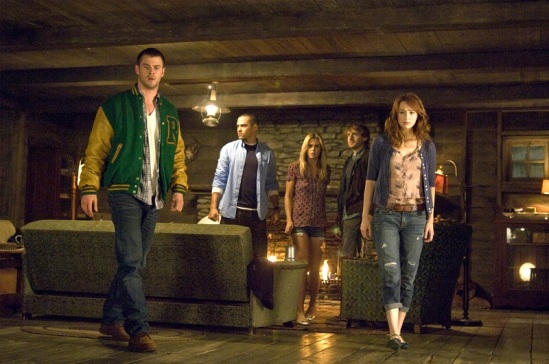A blood transfusion is a relatively simple medical procedure during
which a patient receives whole blood or one of its parts through an
intravenous line, or IV. This is a tiny tube that is inserted into a
vein using a small needle.
While patients are likely to notice a brief pinch of the needle, a
blood transfusion is considered to be relatively painless. Still, any
procedure that involves a needle is likely to cause some anxiety for a
child, so it helps to understand how a transfusion is done. That way you
can feel confident about what is happening and help put your child at
ease.
About Blood Transfusions

Blood
is like the body's transportation system. As blood circulates, it
delivers oxygen and nutrients throughout the body. It also collects
waste products and carries them to the organs responsible for making
sure the wastes leave the body.
Whole blood is a mixture of cells and liquid, and each part has a specific job:
- Red blood cells carry oxygen to the body's tissues and remove carbon dioxide.
- White blood cells help defend the body against infection. They do
this by producing antibodies, which help destroy foreign germs in the
body.
- Platelets are cell fragments that clot, which helps to prevent and control bleeding.
- Plasma is the liquid part of whole blood and contains a mixture of
water, proteins, electrolytes, carbohydrates, cholesterol, hormones, and
vitamins.
A
blood transfusion can make up for a loss of blood or any part of
the blood. Although whole blood can be transfused, it is rarely used.
Instead, more specific parts of blood are transfused as needed. Red
blood cells are the most commonly transfused part, to increase the
blood's ability to carry oxygen and prevent fatigue and other
complications.
Transfusions take 1 to 4 hours, depending on how much blood and what type is given, and no special recovery time is needed.
Most transfusions are done in a hospital, but they can be done
elsewhere when necessary. In most cases, the blood comes from volunteer
donors. The blood of the donor, which is carefully screened to ensure
its safety, must match the blood of the person receiving it.
The three main reasons why a child may need a blood transfusion are:
- Loss of blood. A child may need a transfusion because of blood loss during surgery or from an injury or an illness.
- An inability to make enough blood. Blood cells are
made in the bone marrow, a spongy substance within the bones in the
body. Some illnesses and treatments can impair the marrow's ability to
make blood. For example, people with cancer often need blood
transfusions because chemotherapy decreases the bone marrow's production
of new blood cells.
- To prevent complications from an existing blood disorder.
Children with sickle cell disease, thalassemia, or anemia caused by
kidney disease may benefit from regular transfusions to boost their
blood's ability to carry oxygen. And those who have bleeding disorders,
such as hemophilia or von Willebrand disease, may need to be transfused
with a specific type of plasma to help prevent serious bleeding.
Where the Blood Comes From
Since there's no manmade substitute for blood, the blood supply used
for transfusion must be donated. The three types of blood donation are:
- Autologous blood donation. Sometimes, when people
know in advance that they are going to need a transfusion (for a planned
surgery, for example), they may donate their own blood beforehand. In
general, kids don't donate their own blood until they are over age 12.
- Directed donation. This is when a family member or
friend with a compatible blood type donates blood specifically to be
used by a designated patient.
- Volunteer donation. Since there's no medical
evidence that blood from directed donors is any safer than blood from
volunteer donors, most patients receive blood donated through blood
drives, which are often run by independent collection agencies like the
American Red Cross.
Some people worry about getting diseases from infected blood, but the
United States has one of the safest blood supplies in the world. Many
organizations, including community blood banks and the federal
government, work hard to ensure that the blood supply is safe.
The risk of contracting a disease like HIV or hepatitis is extremely
low in the United States today because of very stringent blood
screening. Also, the needles and other equipment used are sterile and
they're used only on one person and then thrown away.
Preparing for a Blood Transfusion
Once it's determined that your child needs a
blood transfusion, the
doctor will speak with you about the procedure. Even if the doctor
already has your child's medical history, he or she may review parts of
it with you, double-checking items like allergies. The doctor will also
ask if your child has ever received blood in the past, and if so, if
there were any reactions.
You'll also have the opportunity to ask questions about the
procedure. When you feel comfortable with the information and your
questions have been fully answered, you'll be asked to sign an informed
consent form, stating that you understand the procedure and its risks,
and give your permission for your child to have the blood transfusion.
If the situation is not a life-threatening emergency, two tests will be performed:
- Blood typing. To confirm your child's blood type, a
nurse or technician will draw a sample from your child's arm using a
sterile needle. (Except for the brief needle stick, this isn't painful
and only takes a few minutes.) This blood is immediately labeled with
your child's name and medical record number, and an armband with
matching information is made for your child to wear. The blood is then
sent to the hospital's blood bank lab, where technicians test it for
blood type.
- Cross-matching. Once typing is complete, a
compatible donor blood is chosen. As a final check, a blood bank
technologist will mix a small sample of your child's blood with a small
sample of the donor blood to confirm they are compatible. If they clump
together, the blood is not compatible. If the blood mixes smoothly, they
are. Blood that is deemed compatible is then labeled with your child's
name and medical record number and delivered to where your child will be
receiving the transfusion.
During the Procedure
A transfusion can take place anywhere it is necessary. Most
transfusions occur in a hospital setting, often at a patient's bedside,
in the operating room, in the emergency room, or in the chemotherapy
unit. They can also be performed in an ambulatory care clinic or even at
home, if necessary.
As long as the transfusion is not being done during surgery, you'll
be able to stay with your child, who will be awake. Your child can sit
comfortably in a reclining chair or lie down on a bed, watch a movie,
listen to music, or play quietly, and may also be able to eat and drink,
walk around a bit, and use the bathroom.

Starting an IV Line
A nurse will begin an intravenous line (IV). After the needle is
inserted into an arm or hand, a tiny plastic tube is left in the vein
and attaches to the IV tubing, which is then used to connect to the bag
containing the blood.
Since puncturing the skin involves a small needle, starting an IV can
cause a little bit of pain (kind of like a small pinch). To ease any
discomfort, a nurse might put some numbing cream on your child's skin a
half hour before inserting the needle.
Though the vein is typically in the arm or hand, it can be done in
many other places, if necessary, especially if conditions like severe
dehydration or blood loss have made the veins harder to find. For
example, babies often receive transfusions through veins in their foot
or scalp.
Children who need many transfusions may require a central line (a
tube inserted into a larger vein in the chest) or a PICC line (a longer
tube inserted through a vein near the bend of the elbow). These lines
allow easy access, and they also spare the smaller veins the damage that
can come from repeated punctures.
Giving Medications
Most kids don't require any special medications before or during a
blood transfusion. However, if your child has had a mild reaction during
a transfusion before — the doctor may give your child some medication
just before the procedure. These may be given by mouth or through the
IV.
unsecured loans
Cross-Checking the Blood
Just before the transfusion, two nurses will read to each other the
names and identification numbers on your child's armband and on the
blood that came from the blood bank. The transfusion won't begin unless
there is a match.
Transfusing the Blood
The blood bag is hung upside down from an IV pump that controls the
speed of the flow. The blood flows out of the bag, into the tubing,
through the tiny tube in the skin, and into the bloodstream. The whole
process takes about 1 to 4 hours, depending on how much blood is given.
The nurse will take your child's blood pressure, body temperature,
and pulse several times throughout the procedure. Your child will also
be watched closely for any signs of an allergic or other type of
reaction, including rash, fever, headache, or swelling.
After the Procedure
After a transfusion, the tiny plastic tube is removed from the vein
and a bandage is placed over the area. The site may be slightly sore or
tingly for a little while. Medication may be given for any mild side
effects, such as fever or headache.
If the transfusion was not done as part of a surgery or because of an
injury causing blood loss, there is no special recovery time needed and
your child may leave the hospital shortly after the procedure.
Benefits
In children with anemia or those undergoing chemotherapy, the biggest
benefits of transfusions are increased blood flow to nourish the organs
and improved oxygen levels in the body. This can keep them from feeling
extreme fatigue and help give them enough energy for the activities of
daily life. Benefits like this are often felt fairly quickly.
For patients with bleeding problems, transfusions with platelets or
plasma can help to control or prevent bleeding complications.
Risks and Complications
Serious reactions to transfusions are rare, but,
bad credit loans as for any medical
procedure, there are a few potential risks. These may include:
- Fever. Patients may get a fever, sometimes along
with chills, a headache, or nausea. These can be caused by a reaction
between the recipient's immune system and specific types of proteins in
the donor blood. When this happens, doctors will stop the transfusion to
make sure there is not a serious problem and give the patient
fever-reducing medication. In most cases the transfusion is restarted
soon after.
- Allergic reaction. Allergic reactions (like hives
or itching) occur when the recipient's immune system reacts with
proteins in the donor blood. In rare cases, an allergic reaction can be
severe (a condition called anaphylaxis). Stopping the transfusion and
giving the patient medications such as antihistamines and steroids can
treat a reaction. If the reaction is mild and responds to medication,
the transfusion can start again. If it is more serious, the focus will
be on treating the reaction.
- Hemolytic reaction. If a patient's blood type and
the donor blood type do not match, the result can be a life-threatening
condition called a hemolytic reaction. This means the recipient's immune
system attacks the red blood cells in the donated blood and destroys
them. If a hemolytic reaction appears to be occurring, doctors stop the
transfusion right away and treat the symptoms. Reactions like this are
very rare because health care professionals take many precautions to
confirm that the patient's and donor's blood type are compatible before
giving a transfusion.
Alternatives
During surgery, doctors try to reduce the need for transfusions by
minimizing blood loss. In some cases, they may even be able to collect
blood lost during surgery and return it to the patient. But until
science develops a manmade blood source, there is no acceptable
alternative to a blood transfusion in many situations.
Certain medications called growth factors are sometimes used to increase
the body's ability to make blood. These include erythropoietin and
thrombopoetin, which stimulate red blood cell and platelet production.
In some patients, particularly newborns with anemia or a child
experiencing anemia due to kidney disease, medications like these may
have some benefits. But in most cases they don't entirely replace the
need for a transfusion.
When your child is having any kind of procedure, it's understandable
to be a little uneasy. But it helps to know that in most cases, blood
transfusions are common procedures and complications are rare. If you
have any questions about transfusions, talk with your doctor.















